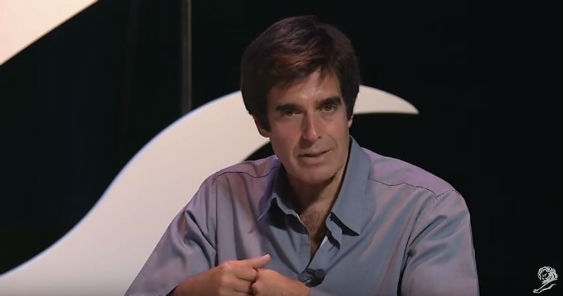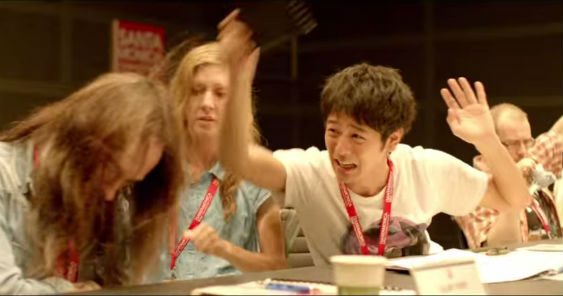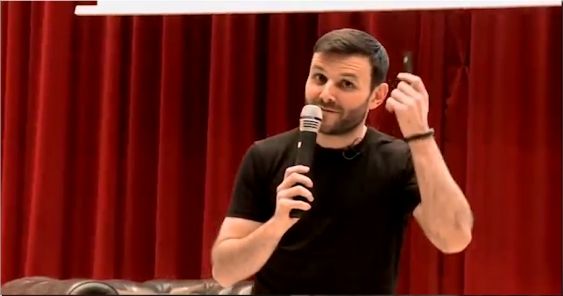by Rome Jorge
CANNES – It’s getting harder and harder to keep the focus of people on what you want them to see and away from what you don’t. In the age of global 24/7 ubiquitous branding and marketing, constant exposure not only allows new ways to constantly engage consumers’ attention, it also quickly exposes the flaws and slips of both personalities and brands as well as quickly tiring them on any novelty. It’s time advertisers, brand managers, publicists, and media practitioners learn a thing or two from the centuries old craft of illusionists.
No one else knows better how to keep people focused on what they want while performing sleight-of-hands. No one else knows the careful balance between credibility and fantasy or between revelation and secrecy that is necessary for entertaining audiences. And no illusionist is better at keeping audiences beguiled than David Copperfield—a name synonymous with his trademark combination of humor, drama, astounding theatricality, and disarming charisma. Copperfield is famous for such spectacles as making New York’s Statue of Liberty disappear and walking right through China’s Great Wall and has sold over four billion US dollars worth of tickets to his various shows worldwide—a staggering 600 shows a year.
At the 2016 Cannes Lions International Festival of Creativity—the preeminent creative awards in the world held at the French Riviera—Copperfield wowed an audience used to the most creative spectacles as he delivered a uniquely didactic presentation entitled Making Magic: The Art of Illusion in Modern Brand Narrative that was studded with magic tricks and peppered with laughter at the Debussy Theatre on June 18 4pm (local time) for the second conference on the first day of the Lions Live seminars. True to its name, Lions Live is available publicly and globally through real-time video streaming.
Joining Copperfield was Kenneth Hertz, founding partner of entertainment marketing and strategy consulting firm memBrain that represents Intel, McDonald’s, Hasbro, Logitech, and Keds and senior partner at Los Angeles law firm of Hertz Lichtenstein & Young LLP that represents celebrities such as Will and Jada Smith, Gwen Stefani, The Black Eyed Peas, Keith Richards, Jason Mraz, Britney Spears, Annie Leibovitz, and Ariana Grande.
Hertz began by quoting science fiction author Arthur C. Clarke: “Any sufficiently advanced technology is indistinguishable from magic.”
He went on to note, “In a world of increasing transparency brought on by the fact that everyone is broadcasting to everyone all the time, it’s made marketing very challenging and I thought maybe there was something we can learn about transparency from the world’s greatest illusionist.”
Copperfield revealed that he became an illusionist because of his need to entertain. His idols were not magicians such as Harry Houdini but actors such as Gene Kelly. Few people realize that at 18 years of age, Copperfield, born David Seth Kotkin, was cast as the lead in The Magic Man, a musical comedy created by the producers of Grease that opened to rave reviews. During the talk at Cannes, Copperfield had the audience in the palm of his hands.
He reveals that what sets him apart from other illusionists is storytelling. He explains, “My magic was never just about magic. When I sawed a girl in half, I did it as a date with a magician. It had context. Before vanishing someone behind a shower curtain, I would do it as a scene from Psycho. It was always about emotional context.”
Copperfield recounted how his magic trick of making an airplane disappear for his own television special had people talking. “It was viral before viral existed,” he exclaimed. It taught him a priceless lesson. “I learned the power of big iconic idea that day,” he confided.
His success was as much about trust and authenticity as it was about illusion and deception. “There’s a relationship I have with the audience. They trust me,” noted Copperfield.
In his most famous magic trick. Copperfield combined a big idea with context and storytelling. He transformed his disappearing trick on the Statue of Liberty into a lesson on the value of freedom—people don’t know how much they needed it until it was gone—and Copperfield’s own story as an immigrant’s son—the real-life narrative of how his parents Hy and Rebecca Kotkin were jewish Russians who came to America with hopes and dreams like the millions welcomed by the Statue of Liberty through the century.
“The power of the big ideas is what it’s all about,” enthuses Copperfield. “It’s also the power of storytelling too,” chimes in Hertz, noting, “As it turns out convergence isn’t telephones and televisions and computers. It’s about marketers being better storytellers and storytellers figuring out what it is they sell for a living.” He adds, “One thing file sharing taught the music and move industry was that it’s hard to sell content, but you can use content to sell.”
Copperfield also highlights the need to surprise audience by turning conventions on their heads. He recounts having invented a new trick where he could be sawed in half without any box obscuring his body. But instead of performing it as is, he fooled audiences into thinking it was an escape trick. To their horror, Copperfield failed to escape the saw of doom and was cut in half, only to be amazed by both his disjointed feet still wiggling.
Ever the entertainer, Copperfield not only regales the audience with humorous anecdotes and video clips of his old tricks but also performs new ones live in ways that has them laughing in stitches.
The brand of David Copperfield continues to work its magic.






